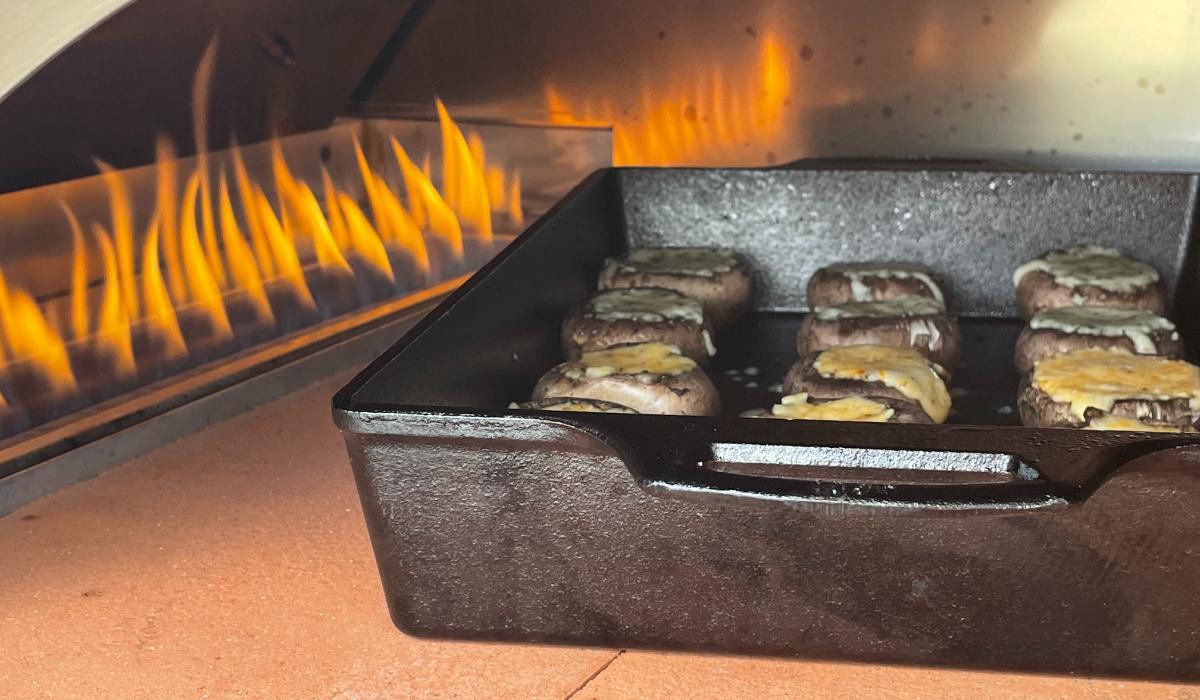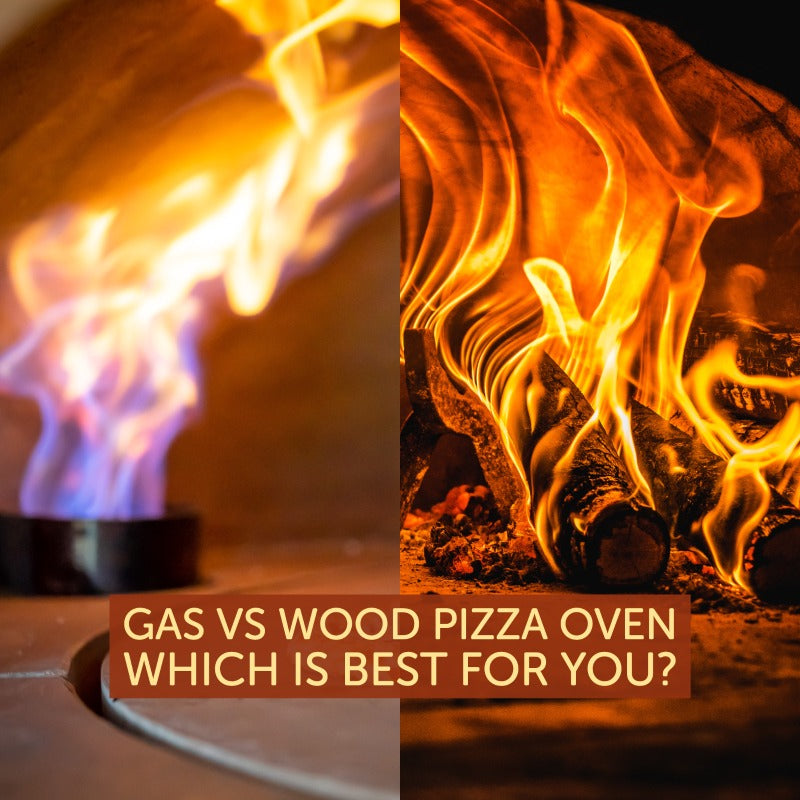Are you ready to take your grilling game up a notch by entering the unique realm of pizza oven cooking? You may be wondering if a wood fire or gas fired pizza oven gives you the edge when it comes to taste, heating time and ease of cleaning.
Whether you are a new chef eager to get started or an experienced home cook ready for a change, this blog post will cover everything about gas and wood-fired pizza ovens so that you can make an informed decision that fits your needs.
Benefits of Gas Pizza Ovens: convenience, fast heating times, and easy cleanup
Gas pizza ovens are becoming increasingly popular in both professional and residential settings, due to their convenience and ease of use. Using gas as a heat source allows chefs and home cooks alike to quickly heat a gas oven and begin cooking pizzas in less time than with other methods or types of ovens.
A gas-powered pizza oven may not reach the high cooking temperatures of a wood fire oven, you have better temperature control. This means you can keep consistent temperatures when baking dishes like casseroles and desserts at lower temperatures.

Propane gas is typically used for backyard ovens because it is readily available. Propane differs from natural gas in that it’s more efficient and highly concentrated. This means that you need less propane compared to natural gas to generate an equal amount of BTUs. LP is also mobile which makes it a choice if you want to move your pizza oven around the patio or pool area.
Natural gas, on the other hand, is more affordable than propane so many new homes are already set up to utilize natural gas for plumbing. Therefore, if may be a great choice if it's already available where you want to put your own pizza oven. Natural gas is also the most popular gas used for a commercial pizza oven.
Gas ovens are much easier to clean than a wood oven because they lack the smoky residue that definitely adds flavor but can be a bit of a nuisance at times. So if you're looking for excellent tasting food that is cooked quickly and conveniently, gas pizza ovens come highly recommended!
Benefits of Wood Pizza Ovens: authentic flavor, rustic look, unique experience
The wood-fired oven provides an authentic flavor, texture, and rustic look that can't be achieved with a gas-fired one. A wood oven in your outdoor kitchen can create authentic wood-fired pizza as easily as they can bake loaves of bread.

While wood fuels generate very high temperatures, as used in Italy for Neapolitan-style pizzas, they can also use radiant heat for lower temperature cooking. This can help create the perfect crisp crust without burning the toppings or creating a soggy center.
Most important, a wood-fired pizza oven creates a unique ambiance and turns your own backyard into a destination location for creating lasting memories.
Heating Times & Cooking Methods
When it comes to pizza ovens, gas-fired versions offer the convenience of simply needing to be connected to a gas line. This gives it an easily accessible fuel source that can be turned on instantly.
On the other hand, wood-burning pizza ovens rely on their own fuel source and take more preparation time, but they produce an incredibly flavorful pie due to the smoky taste imparted by the wood.
Gas ovens are considered to heat more quickly than wood fired oven because they simply require the push of a button. Wood burning, however, can reach an even hotter floor temperature. When you burn wood in your oven, the coal bed on top of the oven floor accumulates and sends heat straight into it while also heating up the dome overhead. You are able to move around this wood fire to different parts of your oven's floor so it will be extremely hot when cooking time arrives!
Gas fueled ovens offer a singular, steady heat source - the flame. As it heats up the dome of your pizza oven, radiant warmth radiates to the floor as well; however you cannot use it to directly heat the floor or move fire around inside. Yet, if slow cooking is desired and considerable length of time needed for roasting meat or baking casseroles – gas burner will maintain an even temperature without needing more wood added throughout its usage.
Wood-burning ovens typically hold heat longer because the wood source remains hot even after you stop putting wood in the oven. This makes wood brick ovens the perfect choice for longer period cooking like smoking meat. The unique flavor achieved from the use of a wood-fired oven is among the key differences between the fuel options.
If both types of pizza ovens have achieved the same temperature, the cooking process of both ovens should be roughly the same.
Cleaning Tips for Gas Pizza Ovens
Cleaning the cooking floor of a gas powered pizza oven is a relatively easy and straightforward process. You just need to sweep out any food residue or scrape it from the cooking tiles. To get into the nooks and crannies you can use a small brush or vacuum.
As stainless steel tends to be the most common material used for these ovens, a stainless steel scrubber should be used on the outside of the oven. A regular kitchen sponge can also do the trick.
Following these steps will ensure that your gas powered pizza oven remains in top condition for years to come!
Cleaning Tips for Wood Pizza Ovens
For a wood-fired pizza oven, it is necessary to sweep out the cooking area and oven floor when necessary. A special ash vacuum can be used for the fine particles of ash. Removing old wood chips and other residue helps prevent a build-up of ash that can lead to burning unevenly, reducing the quality of the pizza.
For best results, the floor of wood pizza ovens should be periodically cleaned with a damp cloth. Following these simple steps will help wood pizza oven owners maintain their equipment and produce delicious pizzas every time!
Final Verdict
Whether wood-fired or gas-fired is the best pizza oven for you ultimately depends on a combination of factors specific to your cooking style, budget, and overall preferences. Each type of oven has their pros and cons when it comes to heating times and cleaning; the most important thing is to find the best option for your specific needs.
While wood-fired pizza ovens generally provide a more traditional smoky flavor and may take less time to cook than gas-fired ovens, they require the continual tending of wood which can be costly or inconvenient depending on whether you have easy access to wood.
On the other hand, a gas-fired pizza oven may not offer the authentic taste compared to wood-fired options but they require significantly less monitoring and upkeep than wood-fired models; they are also easier to keep clean and need less maintenance.
Consider your budget, convenience needs, preferences for taste, and cleaning capabilities in order to make the right decision when determining which type of pizza oven fits you best!
When it comes down to wood-fired vs. gas-fired pizza ovens, the choice ultimately comes down to personal preference. What are you looking for in your pizza experience - flavor or convenience?
If you want the best of both worlds, be sure to check out our hybrid wood/gas pizza ovens so you don’t have to choose one or the other – do both!











